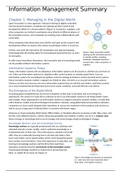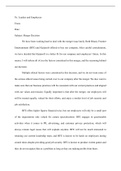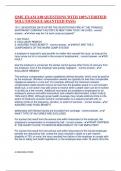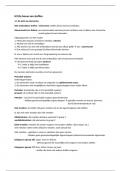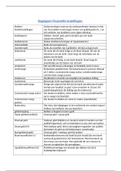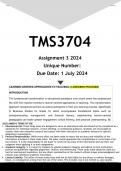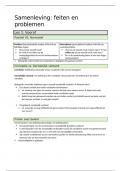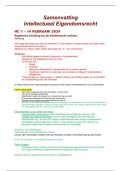Samenvatting
Summary of the book ''Information Systems Today; Managing in the Digital World'' by Joseph Valacich & Christoph Schneider
Summary of the book ''Information Systems Today; Managing in the Digital World'' by Joseph Valacich & Christoph Schneider, used in the course Information Systems at International Business Administration (year ) Includes chapters 1, 2, 4, 5, 6, 7 and 10
[Meer zien]
